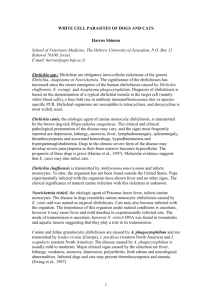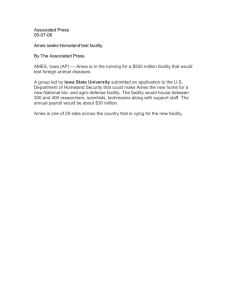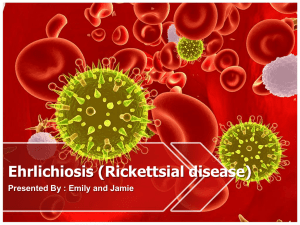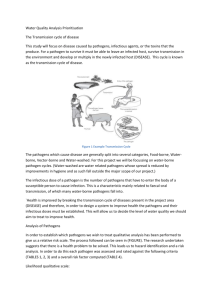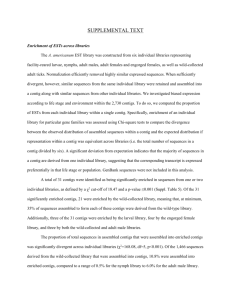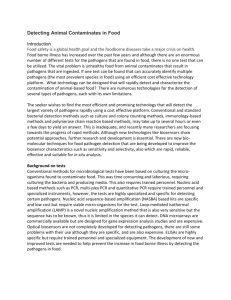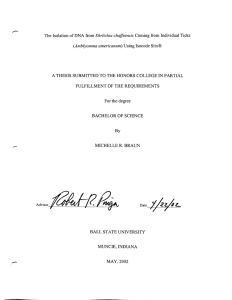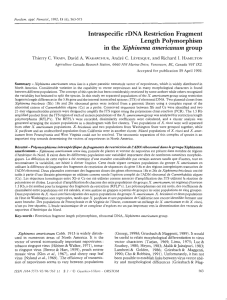bRIAN hENDRICKS Seminar Summary
advertisement
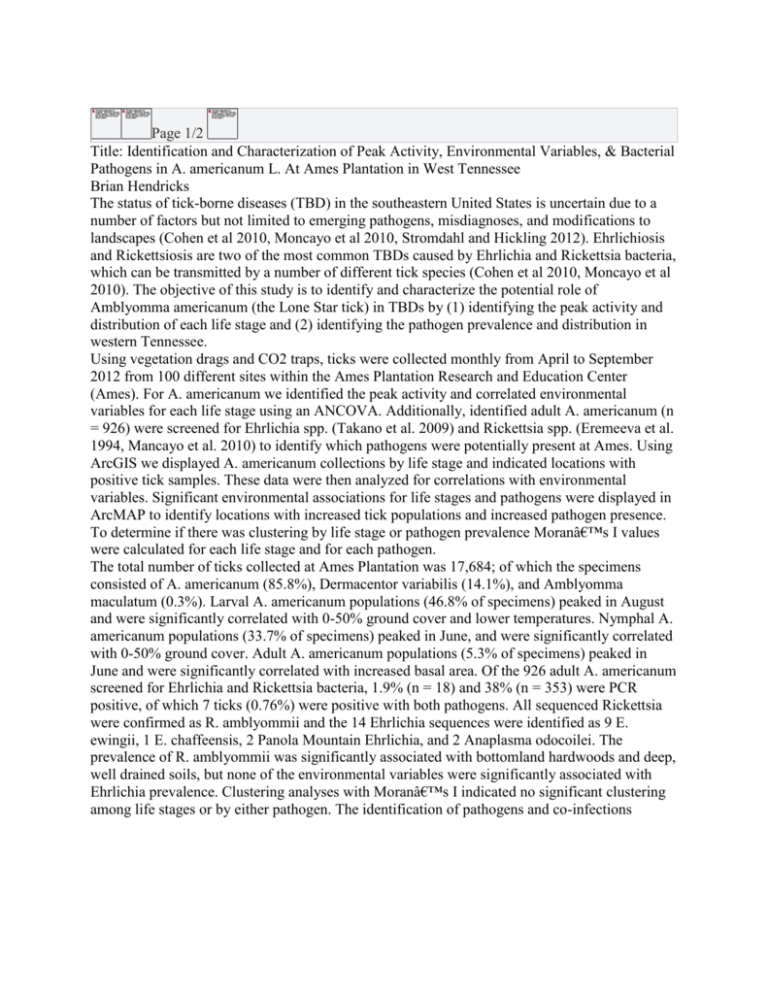
Page 1/2 Title: Identification and Characterization of Peak Activity, Environmental Variables, & Bacterial Pathogens in A. americanum L. At Ames Plantation in West Tennessee Brian Hendricks The status of tick-borne diseases (TBD) in the southeastern United States is uncertain due to a number of factors but not limited to emerging pathogens, misdiagnoses, and modifications to landscapes (Cohen et al 2010, Moncayo et al 2010, Stromdahl and Hickling 2012). Ehrlichiosis and Rickettsiosis are two of the most common TBDs caused by Ehrlichia and Rickettsia bacteria, which can be transmitted by a number of different tick species (Cohen et al 2010, Moncayo et al 2010). The objective of this study is to identify and characterize the potential role of Amblyomma americanum (the Lone Star tick) in TBDs by (1) identifying the peak activity and distribution of each life stage and (2) identifying the pathogen prevalence and distribution in western Tennessee. Using vegetation drags and CO2 traps, ticks were collected monthly from April to September 2012 from 100 different sites within the Ames Plantation Research and Education Center (Ames). For A. americanum we identified the peak activity and correlated environmental variables for each life stage using an ANCOVA. Additionally, identified adult A. americanum (n = 926) were screened for Ehrlichia spp. (Takano et al. 2009) and Rickettsia spp. (Eremeeva et al. 1994, Mancayo et al. 2010) to identify which pathogens were potentially present at Ames. Using ArcGIS we displayed A. americanum collections by life stage and indicated locations with positive tick samples. These data were then analyzed for correlations with environmental variables. Significant environmental associations for life stages and pathogens were displayed in ArcMAP to identify locations with increased tick populations and increased pathogen presence. To determine if there was clustering by life stage or pathogen prevalence Moran’s I values were calculated for each life stage and for each pathogen. The total number of ticks collected at Ames Plantation was 17,684; of which the specimens consisted of A. americanum (85.8%), Dermacentor variabilis (14.1%), and Amblyomma maculatum (0.3%). Larval A. americanum populations (46.8% of specimens) peaked in August and were significantly correlated with 0-50% ground cover and lower temperatures. Nymphal A. americanum populations (33.7% of specimens) peaked in June, and were significantly correlated with 0-50% ground cover. Adult A. americanum populations (5.3% of specimens) peaked in June and were significantly correlated with increased basal area. Of the 926 adult A. americanum screened for Ehrlichia and Rickettsia bacteria, 1.9% (n = 18) and 38% (n = 353) were PCR positive, of which 7 ticks (0.76%) were positive with both pathogens. All sequenced Rickettsia were confirmed as R. amblyommii and the 14 Ehrlichia sequences were identified as 9 E. ewingii, 1 E. chaffeensis, 2 Panola Mountain Ehrlichia, and 2 Anaplasma odocoilei. The prevalence of R. amblyommii was significantly associated with bottomland hardwoods and deep, well drained soils, but none of the environmental variables were significantly associated with Ehrlichia prevalence. Clustering analyses with Moran’s I indicated no significant clustering among life stages or by either pathogen. The identification of pathogens and co-infections Next Page Find Go to Page Thumbnail Index Image View Download a Copy Close


